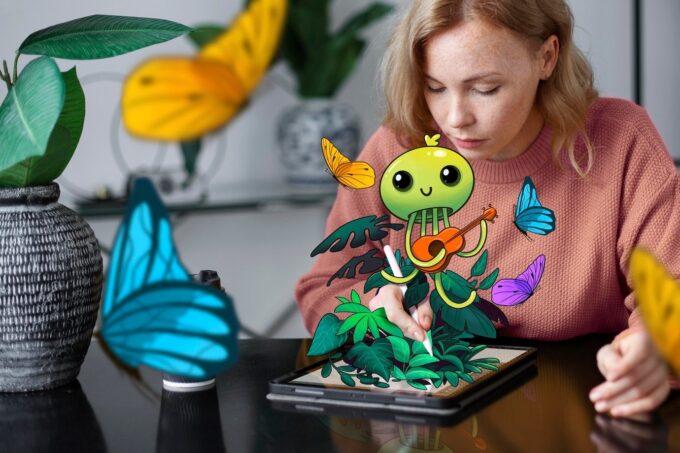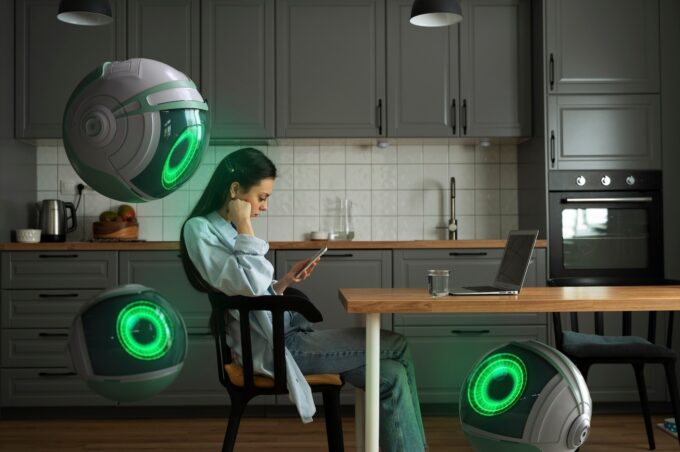Artificial Intelligence (AI) has rapidly transformed many industries, from healthcare to finance. However, AI’s influence extends beyond these well-known applications. Today, we explore how artificial intelligence is making waves in some unexpected fields. You might be surprised to learn how it is being creatively used in areas you’d never expect. Let’s dive in!
AI in Personal Relationships: The Era of Virtual Companions
AI’s innovative reach extends into personal relationships, creating virtual companions like those offered by AI girlfriend. Hera Haven uses advanced artificial intelligence to develop personalized virtual girlfriends, offering emotional support and companionship.
These AI companions learn from interactions, adapting to user preferences and providing a customized experience. This application of artificial intelligence demonstrates its versatility, transforming how people connect and find support.
Arts

Source: freepik.com
AI has ventured into the world of art, creating stunning pieces that challenge our perception of creativity. These algorithms analyze thousands of artworks to understand styles and techniques. The result? AI-generated paintings that mimic famous artists or create entirely new styles. Projects like DeepArt and Google’s DeepDream produce mesmerizing images, blending human creativity with machine precision.
Composing the Future of Music
Music composition is another unlikely area where AI shines. Platforms like OpenAI’s MuseNet can compose music in various styles, from classical to pop. AI analyzes existing compositions, learning patterns and structures, then generates original pieces. This technology helps musicians experiment with new ideas, offering a fresh perspective on music creation.
Smart Farming
Farming might seem an unlikely place for AI, but it’s revolutionizing agriculture through precision farming. AI-powered drones and sensors collect data on crop health, soil conditions, and weather patterns. Farmers can then use this information to make informed decisions, optimize water use, reduce pesticide application, and increase crop yields.
Livestock Management
AI also aids in livestock management. Smart collars and monitoring systems track the health and behavior of animals, alerting farmers to potential issues before they become serious. This technology ensures better animal welfare and improves overall farm efficiency.
Personalized Fashion

Source: freepik.com
AI is transforming the fashion industry by enabling personalized clothing designs. Algorithms analyze customer preferences and body measurements to suggest tailored outfits. This level of customization enhances the shopping experience and reduces the environmental impact by minimizing returns and waste.
Trend Forecasting
Fashion trends can be unpredictable, but artificial intelligence is helping brands stay ahead of the curve. By analyzing social media, sales data, and online behavior, AI predicts upcoming trends with remarkable accuracy. This insight allows designers to create collections that resonate with consumers, keeping them relevant in a fast-paced industry.
Virtual Property Tours
AI is enhancing the real estate market through virtual property tours. Potential buyers can explore properties remotely, guided by AI-powered virtual agents. These tours provide detailed information and answer questions in real time, making the property search process more efficient and engaging.
Predictive Analytics
AI uses predictive analytics to determine property values and market trends. By analyzing historical data and current market conditions, artificial intelligence offers insights that help buyers and sellers make informed decisions. This technology reduces the guesswork in real estate transactions, leading to better outcomes for all parties.
AI in the Kitchen

Source: freepik.com
AI is getting creative in the kitchen, developing new recipes based on flavor profiles and ingredient combinations. IBM’s Chef Watson, for example, suggests unique recipes that balance taste and nutrition. This technology inspires chefs to experiment with new ingredients and techniques, pushing culinary boundaries.
It also plays a crucial role in food safety. AI systems monitor production lines, detecting contaminants and ensuring compliance with safety standards. This technology reduces the risk of foodborne illnesses and improves overall product quality.
Conclusion
AI’s reach extends far beyond the typical industries we associate with technology. From creating art to optimizing agriculture, artificial intelligence is proving its versatility and potential.



